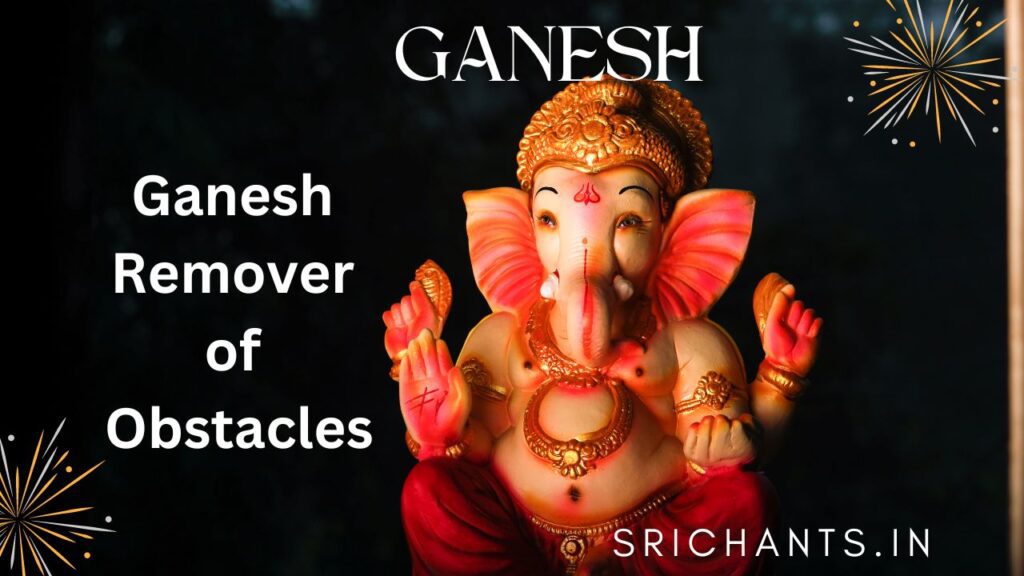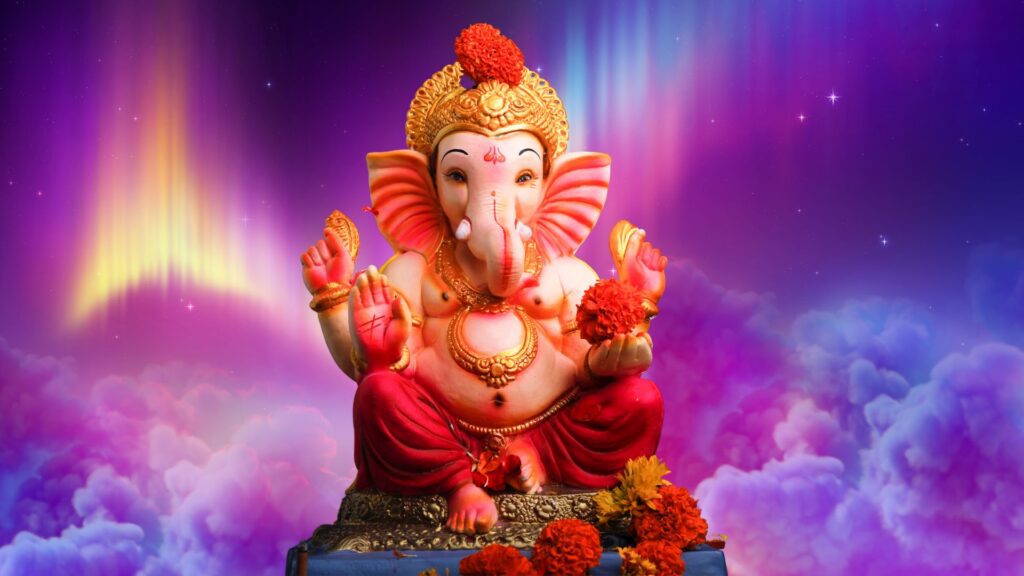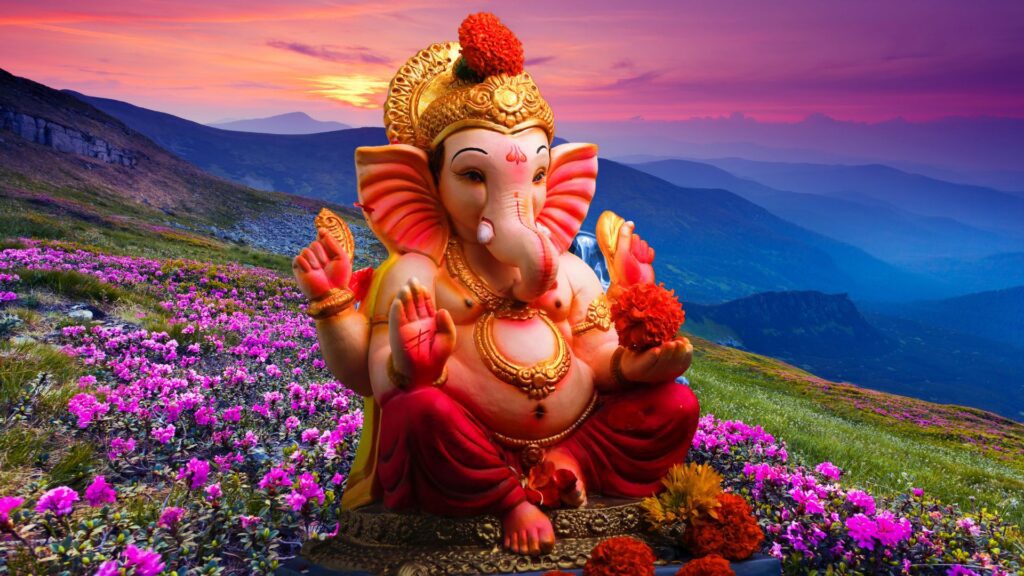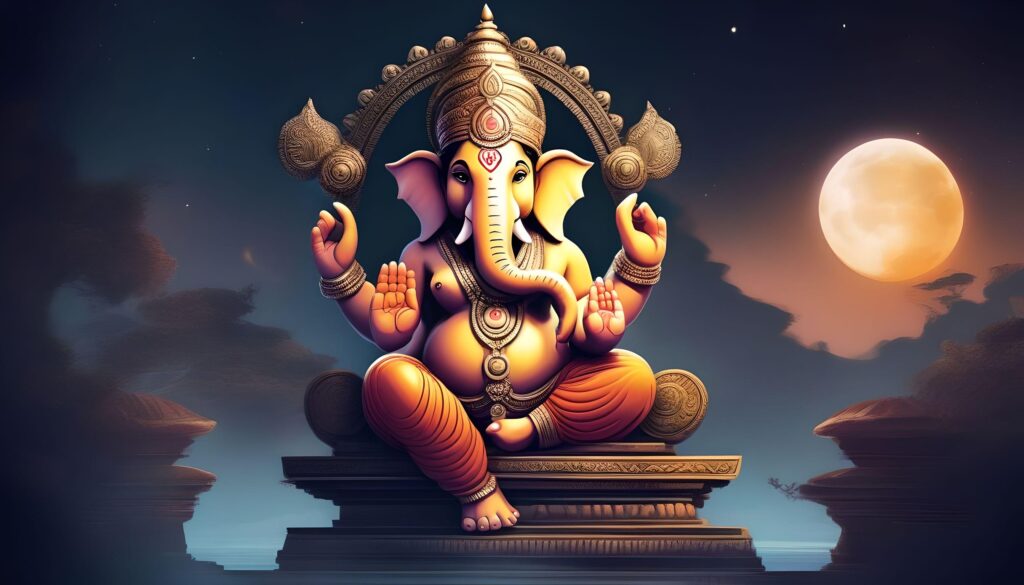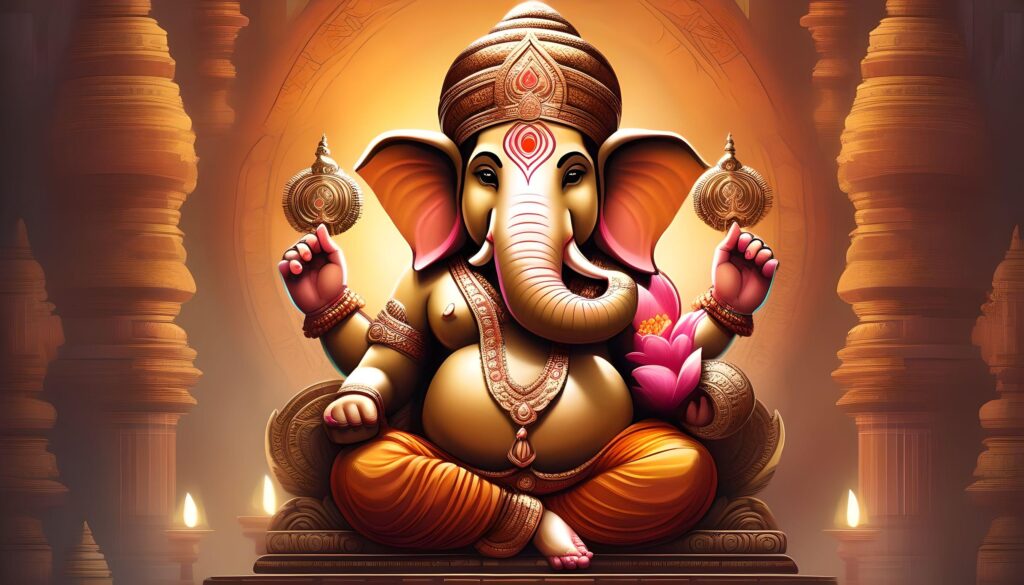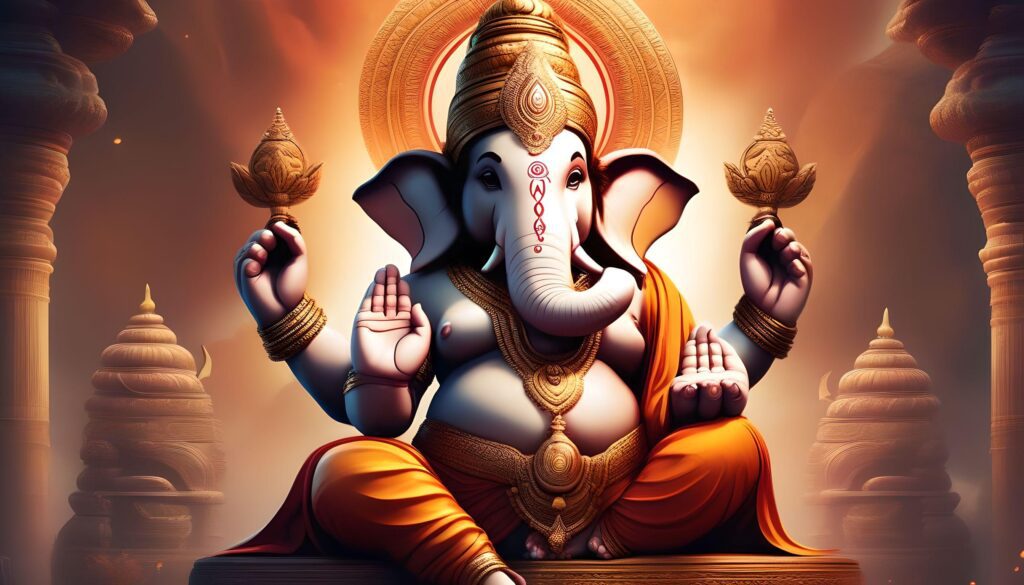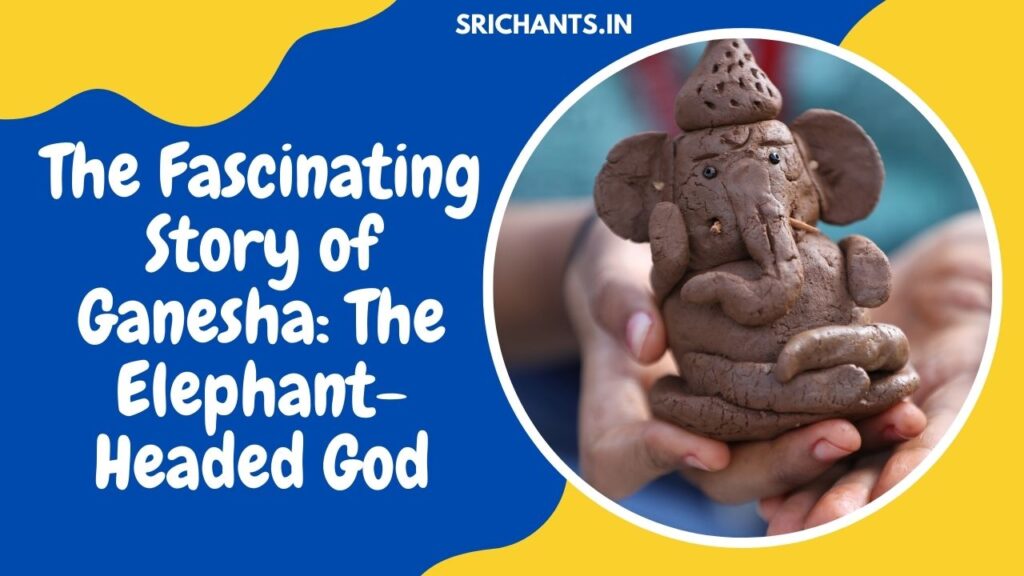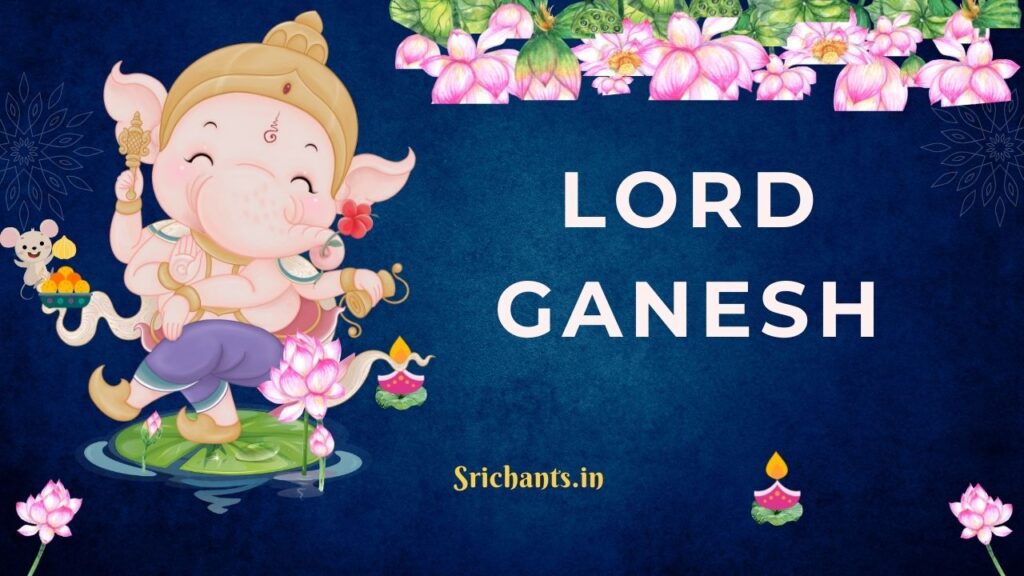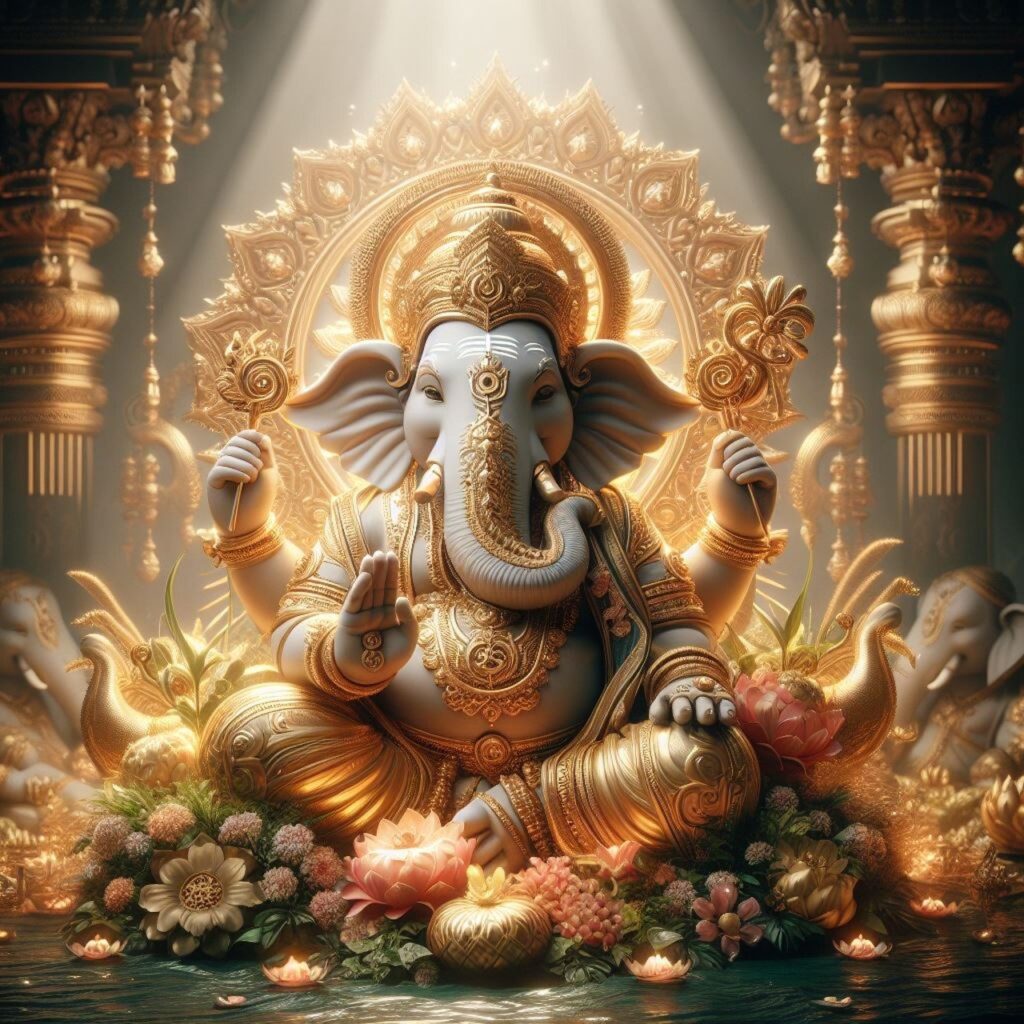Ganesh Remover of Obstacles
Introduction
Millions of individuals worldwide hold a special affection for Lord Ganesha, a divinity who is highly revered in Hinduism. Ganesha, the embodiment of divine grace and benevolence, is revered as the remover of obstacles, the benefactor of arts and sciences, and the harbinger of wisdom and prosperity. This article delves into the cultural significance, symbolism, worship, and origins of Lord Ganesha.
Origins and Mythology
Ganesha’s origins can be traced back to the ancient Hindu scriptures, particularly the Puranas and the Mahabharata. Ganesha is the offspring of Lord Shiva and Goddess Parvati, as per mythology. The divine creation of Parvati, who sculpted him from sandalwood paste while bathing, is the reason for his distinctive appearance, which combines an elephant head with a human body.
According to legend, Ganesha denied Shiva, Ganesha’s father, access when Shiva returned home and discovered a young boy guarding the entrance. Shiva, enraged, fought the boy in a fierce combat, ultimately severing his head. Parvati, who was distressed by her husband’s actions, implored Shiva to revive their son. In a gesture of reconciliation, Shiva bestowed upon Ganesha the unique form for which he is venerated today by replacing his head with an elephant, thereby granting him new life.
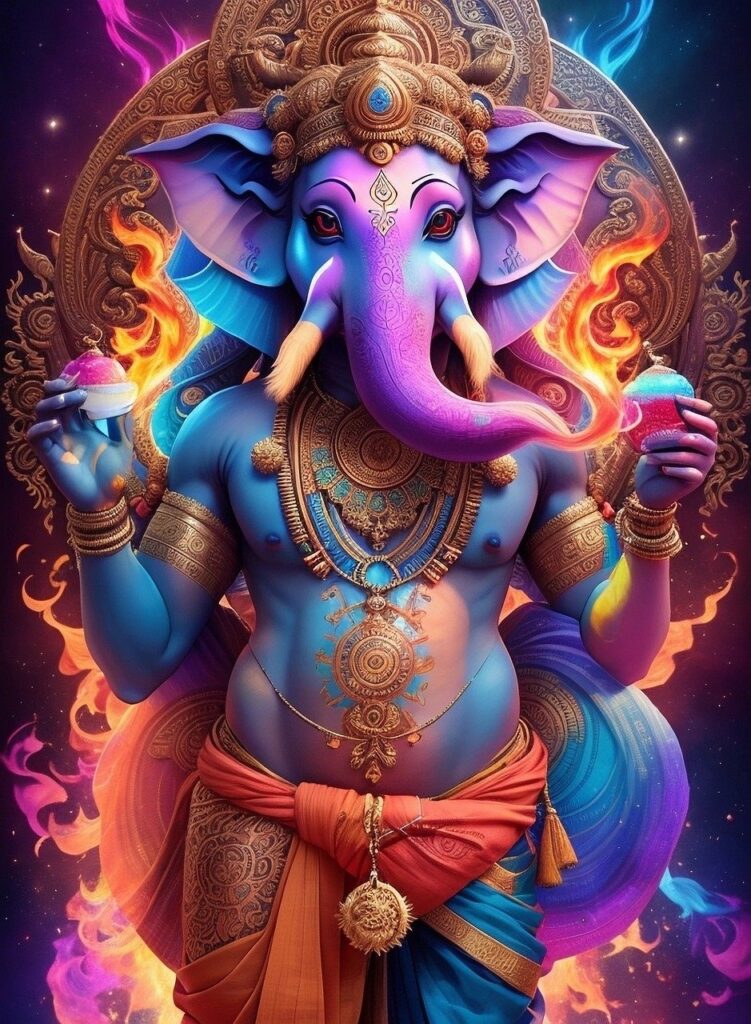
Symbolism and Iconography
Ganesha’s iconic form is laden with symbolism, each aspect carrying profound spiritual significance:
- Elephant Head: Ganesha’s elephant head is a representation of intelligence, foresight, and wisdom. It embodies the capacity to discern the subtle nuances of life and navigate through its obstacles with grace and wisdom.
- Rotund Belly: His large belly is indicative of his ability to assimilate the pleasures and sorrows of life, as well as his contentment and abundance. It serves as a reminder to devotees to accept all experiences with gratitude and tranquility.
- Modak (Sweet Dumpling): Ganesha is frequently depicted holding a modak, a sweet dumpling that is considered his personal preference. The modak is a representation of the rewards of devotion and the sweetness of spiritual wisdom.
- fractured Tusk: Ganesha is frequently depicted holding the missing piece in his hand, with a fractured tusk. He fractured his tusk to scribe the epic Mahabharata when Vyasa, the sage, sought his assistance, according to mythology. This embodies the spirit of sacrifice, humility, and the determination to surmount challenges in order to advance the common good.
- Mouse (Mooshika): Ganesha’s vehicle, the mouse, symbolizes the capacity to overcome obstacles through perseverance and determination, as well as humility and adaptability. The mouse faithfully transports Ganesha, symbolizing the triumph of intellect over ego, despite its diminutive size.
Worship and Festivities
The most significant festival dedicated to Lord Ganesha is Ganesha Chaturthi, also known as Vinayaka Chaturthi. This ten-day festival, which commemorates the birth of Ganesha, is celebrated with great enthusiasm and devotion throughout India and the globe. Chanting petitions, offering sweets and fruits, and installing Ganesha idols are among the elaborate rituals that characterize the festivities. On the final day, devotees send farewell to Ganesha by submerging his idols in water bodies, which symbolizes his return to Mount Kailash, the abode of Lord Shiva.
Before embarking on any new endeavor or embarking on essential life milestones, devotees pray to Ganesha throughout the year. Ganesha, who is revered as Vighnaharta, the remover of obstacles, is invoked to obtain his blessings for success, prosperity, and protection from adversity.
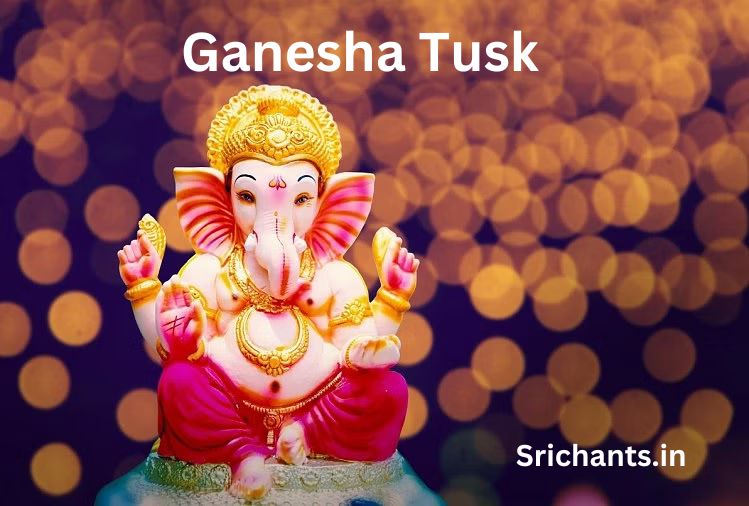
Cultural Significance
Ganesha’s influence is not limited to religion and spirituality; it is present in all facets of Indian culture and society.
- Arts and Literature: Ganesha is a widely recognized subject of artistic expression, as evidenced by his representation in a variety of mediums, including sculpture, painting, and literature. Artists, writers, and poets who are seeking inspiration and benefits for their endeavors are inspired by his image, which serves as a muse.
- Education and Learning: Ganesha is held in high regard as the patron of intellect, sciences, and the arts. Before examinations, students, scholars, and academics seek clarity of thought, memory retention, and academic success by invoking his benediction.
- Business and Commerce: Ganesha is revered as the bringer of abundance and prosperity. Entrepreneurs and business proprietors pray to Ganesha in order to obtain his blessings for the prosperity, wealth, and success of their enterprises.
Philosophical Teachings
In addition to his status as a deity, Ganesha embodies timeless philosophical principles that provide valuable insights for traversing the intricacies of life:
- Adaptability: Ganesha’s mouse vehicle, which symbolizes his capacity to adjust to shifting circumstances, demonstrates the significance of resilience and flexibility in surmounting challenges.
- Wisdom and Intelligence: Ganesha’s elephant cranium symbolizes the capacity to distinguish between reality and illusion, as well as wisdom and intelligence.
- Contentment and Acceptance: Ganesha’s rotund abdomen is a representation of the capacity to accept all experiences with serenity and gratitude, as well as contentment.
- Humility and Sacrifice: Ganesha’s fractured tusk represents the willingness to surmount obstacles for the greater good, as well as sacrifice and humility.
- Determination and Perseverance: Ganesha’s rodent vehicle symbolizes the capacity to overcome obstacles through determination and perseverance.
Few Names of Ganesha
Lord Ganesha is referred to by 108 names in the Bhagavata Purana. These identities, collectively referred to as “Ashtottara Shatanamavali,” represent Ganesha’s omnipresence and multifaceted nature in the lives of devotees. The following is a list of names and their respective meanings:
- Akhurath: A person who serves as Mouse’s charioteer.
- Amit: The Lord is unparalleled.
- Remover of Obstacles: Avighna.
- Balaganapati: A Child Who Is Beloved and Cherished.
- Devavrata: An individual who consents to all penances.
- Gajanan: The Lord with an Elephant-Face.
- Lambodara: The Lord with a Large Belly.
- Mahaganapati: The Supreme and Omnipotent Lord.
- Siddhidhata: The Omen of Success and Achievements.
- Demolisher of Obstacles: Vignaharta.
Conclusion
Lord Ganesha’s divine grace and benevolence continue to motivate millions of individuals across the globe. In the affections of devotees, Ganesha occupies a unique position as the remover of obstacles, patron of the arts and sciences, and harbinger of wisdom and prosperity. Ganesha provides guidance, protection, and blessings for success, prosperity, and spiritual development through his symbolism, worship, and cultural significance. Devotees strive to navigate life’s challenges with grace and discernment, inspired by the divine presence of Lord Ganesha, by embracing his teachings of adaptability, wisdom, contentment, sacrifice, and perseverance.
